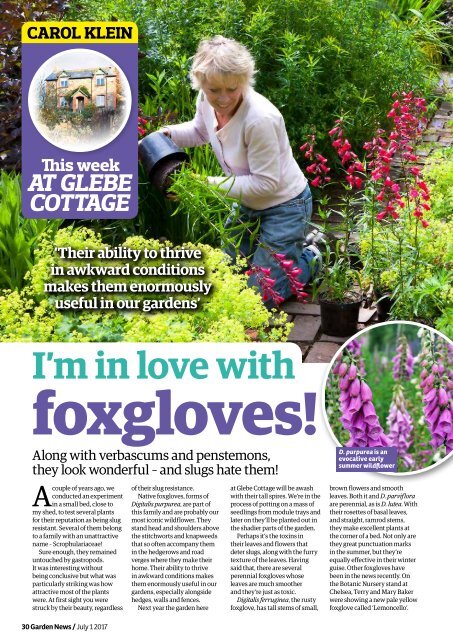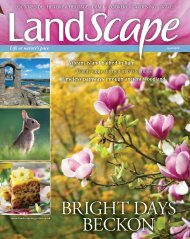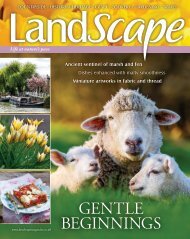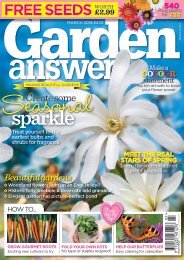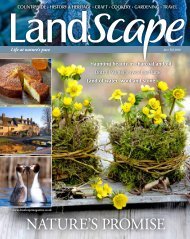Create successful ePaper yourself
Turn your PDF publications into a flip-book with our unique Google optimized e-Paper software.
CAROL KLEIN<br />
This week<br />
AT GLEBE<br />
COTTAGE<br />
‘Their ability to thrive<br />
in awkward conditions<br />
makes them enormously<br />
useful in our gardens’<br />
I’m in love with<br />
foxgloves!<br />
Along with verbascums and penstemons,<br />
they look wonderful – and slugs hate them!<br />
A<br />
couple of years ago, we<br />
conducted an experiment<br />
in a small bed, close to<br />
my shed, to test several plants<br />
for their reputation as being slug<br />
resistant. Several of them belong<br />
to a family with an unattractive<br />
name – Scrophulariaceae!<br />
Sure enough, they remained<br />
untouched by gastropods.<br />
It was interesting without<br />
being conclusive but what was<br />
particularly striking was how<br />
attractive most of the plants<br />
were. At first sight you were<br />
struck by their beauty, regardless<br />
of their slug resistance.<br />
Native foxgloves, forms of<br />
<strong>Digital</strong>is purpurea, are part of<br />
this family and are probably our<br />
most iconic wildflower. They<br />
stand head and shoulders above<br />
the stitchworts and knapweeds<br />
that so often accompany them<br />
in the hedgerows and road<br />
verges where they make their<br />
home. Their ability to thrive<br />
in awkward conditions makes<br />
them enormously useful in our<br />
gardens, especially alongside<br />
hedges, walls and fences.<br />
Next year the garden here<br />
at Glebe Cottage will be awash<br />
with their tall spires. We’re in the<br />
process of potting on a mass of<br />
seedlings from module trays and<br />
later on they’ll be planted out in<br />
the shadier parts of the garden.<br />
Perhaps it’s the toxins in<br />
their leaves and flowers that<br />
deter slugs, along with the furry<br />
texture of the leaves. Having<br />
said that, there are several<br />
perennial foxgloves whose<br />
leaves are much smoother<br />
and they’re just as toxic.<br />
<strong>Digital</strong>is ferruginea, the rusty<br />
foxglove, has tall stems of small,<br />
D. purpurea is an<br />
evocative early<br />
summer wildflower<br />
brown flowers and smooth<br />
leaves. Both it and D. parviflora<br />
are perennial, as is D. lutea. With<br />
their rosettes of basal leaves,<br />
and straight, ramrod stems,<br />
they make excellent plants at<br />
the corner of a bed. Not only are<br />
they great punctuation marks<br />
in the summer, but they’re<br />
equally effective in their winter<br />
guise. Other foxgloves have<br />
been in the news recently. On<br />
the Botanic Nursery stand at<br />
Chelsea, Terry and Mary Baker<br />
were showing a new pale yellow<br />
foxglove called ‘Lemoncello’.<br />
30 <strong>Garden</strong> <strong>News</strong> / <strong>July</strong> 1 2017


